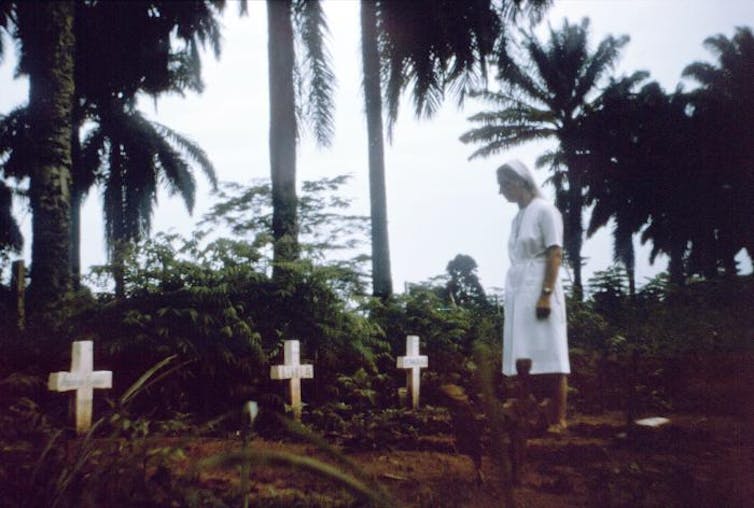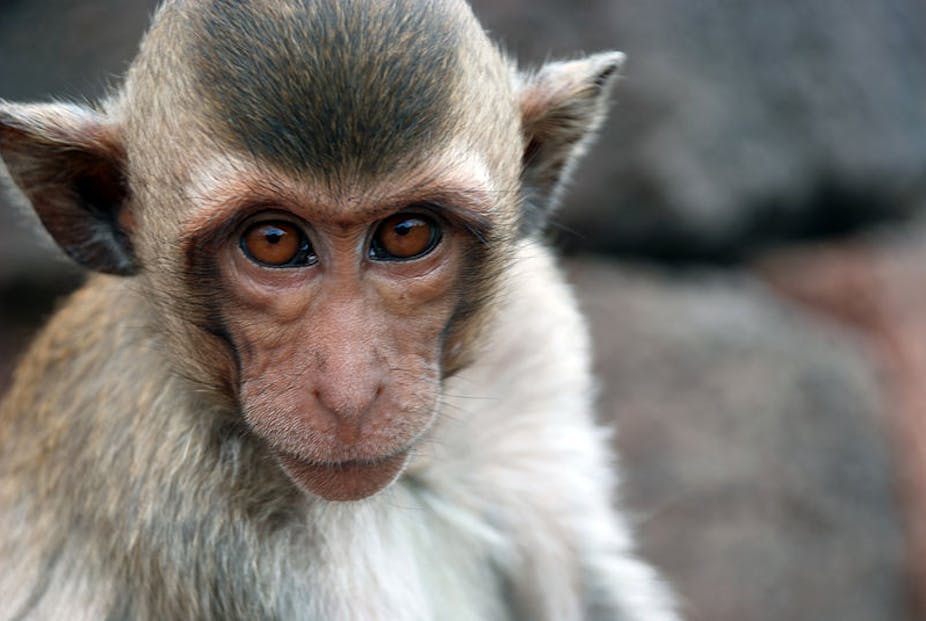As viruses go, Ebola is one that strikes particular fear. It’s infectious and four out of the five identified strains can cause severe hemorrhagic fever, which in later stages leads to bleeding from the eyes, ears and nose as well as the mouth and rectum. One particular strain, Zaire ebolavirus, is one of the deadliest viruses we know and fatal in up to 90% of cases.
Ebola is transmitted through contact with infected blood and other bodily fluids and has caused sporadic but deadly human outbreaks in Africa. There is no cure, vaccine or established drug treatment (one treatment called siRNAs has a high success rate if administered within minutes of infection) and in Africa, often in remote areas, the general approach is containment and palliative care.
But in a study, Canadian researchers found that a combination treatment of antibodies and virus-fighting proteins prevented death from Ebola-Zaire in some primates, even when administered three days after infection and when the early symptoms of the fever, which include fatigue and vomiting, begin to show.

The study, published in Science Translational Medicine, builds on previous work in this field. Using a drug made from three mouse antibodies, the researchers said it protected two out of four non-human primates that were given the treatment two days after infection. But when combined with adenovirus-vectored inteferon (a protein prepped with viral material that helps trigger the immune system), three out of four cynomolgus monkeys survived three days after infection.
In rhesus macaques, however, all four survived after being given this combination three days after infection. A previous study with a similar success rate was on guinea pigs.
The authors said the findings showed that antibodies could control how the Ebola virus replicated and, crucially, that combining it could also extend the window of time to treat the disease.
Gary Kobinger, one of the study authors, said it was the first time that a combination therapy had been done in non-human primates that showed it could be 100% effective.
“In the past antibodies alone were shown to work 100% only 24 hours after infection, but only 50% after 48 hours,” he said. “Now, with this combination, we’ve reached day three and into day four. For us as a team, it’s a bit of a holy grail to be able to get a 100% when you have clinical symptoms and infection has been detected.”
Ebola belongs to the filoviridae family of viruses, which quickly replicates and overwhelms the host’s immune system. The incubation period from first infection to death from the fever varies from between two and 21 days and in more remote areas where outbreaks occur more time would be crucial.
Thomas W Geisber, an expert on Ebola and siRNAs at The University of Texas Medical Branch, said the research was “highly significant because it shows protection against Ebola in a robust model of human disease: non-human primates.” His only concern, he said, was to with the nature of the virus used in the study.
When Ebola-Zaire virus seed stocks are prepared in a laboratory for use in experiments, many are classed as 7U or 8U - this refers to the amount of virus contained in it in its natural wild (unmutated) form. But this can still vary.
“Two 7U stocks can be very different - for example one predominantly 7U stock with around 50% 7U and another 7U stock with around 98%,” Geisber said. “The only way to know for sure is to deep sequence them.”
Viruses with high populations of 7U cause a more rapid disease in macaques and are theoretically more difficult to protect against, he said. However, “past studies performed with viruses containing higher populations of 7U viruses using other MAbs did not protect [non-human primates] against Ebola-Zaire, whereas studies using different antibodies containing high populations of 8U did. It is hard to say whether the difference is because of the antibodies or the virus used.
"My gut feeling is that the difference is because virus stocks with high populations of 7U are more pathogenic in primates and harder to protect against.”
While Geisbert thought the use of siRNAs was more promising, treating Ebola could come down to a combination of “the most promising treatments -like HIV treatments - combined,” he said.
Kobinger said the study used a 7U virus that contained around 80% of the wild type population. The next step would be to work with another leading antibody team to find an “even more potent cocktail” to extend the treatment window.
siRNAs were effective but “a proof of concept” that didn’t fit with real world conditions, he said. “[They are] best when injected everyday for seven days, but treatment has to be initiated within 30 minutes after infection to reach 100% … Even within a lab contamination, this might be unrealistic. In the real world we need to go past 24 hours.”
Ebola first emerged in Sudan and Zaire (now the Democratic Republic of the Congo) in the mid-1970s. Since then five strains have been identified: Zaire (1976), Sudan (1976), Reston (1989) Côte d’Ivoire (1994) and Bundibugyo (2007) - each named after where they were first discovered. Reston, discovered in Virginia in the US and later in pigs in the Philippines (and antibodies in a few pig farmers) isn’t known to cause haemorrhagic fever in humans. Ebola Côte d’Ivoire was discovered after a scientist contracted the infection from an autopsy on a dead chimpanzee.

